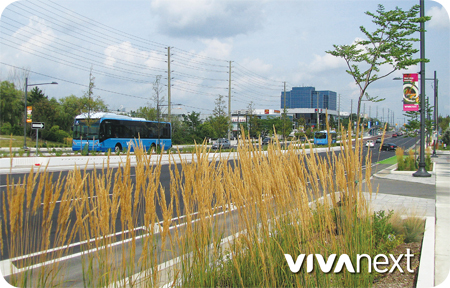In York Region, we’re lucky to have nature around us. From the Oak Ridges Moraine to our woodlands, waterways and wildlife, life is better when we’re surrounded by it.
Rapidway projects are designed with future growth in mind – including supporting population growth and supporting a large variety of new trees and shrubs. Along with dedicated lanes for rapid transit, each project brings urban renewal with wider sidewalks, updated utilities and plenty of trees, shrubs and plants. Since these are construction projects that include widening the road, some of the existing roadside and median trees need to be removed.
We’re currently removing trees located in York Region’s right-of-way for the Yonge Street rapidway project in Richmond Hill and Newmarket. All trees marked for removal were carefully evaluated first, to see if any could be transplanted. Due to the health of the trees and the potential conflicts with overhead and underground utilities, relocation was not possible. Crews will remove the majority of the trees before bird nesting season begins in mid-April. Any trees that still need to be removed after that will first be assessed by a Certified Arborist. Remaining trees around the construction area will be fenced and protected.
Once complete, each rapidway will be a tree-lined street, with attractive landscaping and trees and shrubs chosen for hardiness, appearance and height [to fit under hydro lines once mature]. An urban setting can be tough on a tree, so we use soil cell technology – a rigid framework under the sidewalks in rapidway areas that holds much more planting soil – to protect roots and ensure soil and water stay in place [e.g., see the soil cells we used on Highway 7 East]. New plantings have a guarantee, so if we have especially harsh weather, any that don’t make it will be replaced.
It takes a lot of effort, patience and planning, and the construction itself isn’t pretty. But our communities are growing and the rapidways let us connect faster using transit while keeping our connection to nature and greening our corridors. After this long cold winter, we will all be happy to see a few buds on the trees this spring!

